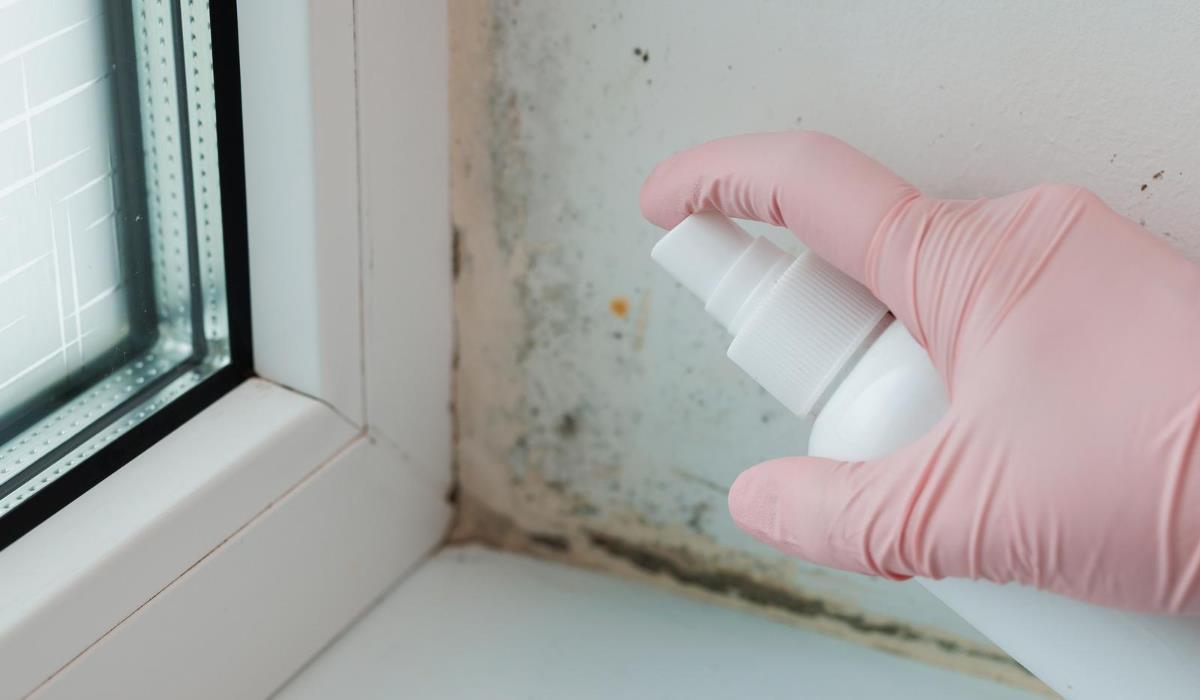Mold is a gray or black stain that can appear on windows, walls and other features inside your home. It occurs primarily in conditions of high humidity and insufficient ventilation, especially on cold surfaces where water vapor condenses.
Mold is a breeding ground for various types of fungi, including those that produce mycotoxins – toxins that may pose a health hazard. Fungal spores that grow in mold can cause allergic reactions such as eye, nose, throat irritation, sneezing, itching, and even asthma. Additionally, mold can negatively affect the condition of building materials, accelerating their deterioration and aging.
Mold on windows – causes
To combat mold effectively, it is necessary to understand its causes. Here are the main factors contributing to its development:
- High Humidity: One of the main factors that promote mold growth is high humidity. Window slopes are often a place where moisture can accumulate, especially if condensation problems occur due to the temperature difference between the interior and exterior.
- Insufficient Ventilation: Lack of proper ventilation creates the perfect conditions for mold. The lack of fresh air circulation leads to moisture retention and creates a favorable environment for the development of fungi.
- Poor Insulation: If windows are poorly insulated, it can lead to condensation on their surfaces. This phenomenon generates a humid environment that favors the growth of mold.
- Lack of vapor barrier and waterproofing: Installing windows without proper vapor barrier and waterproofing may contribute to moisture entering the building structure.
- Covering the windowsill with a heating radiator: Covering the windowsill with a heating radiator may result in condensation on the window surface, which in turn favors the development of mold.
How to remove mold from windows?

Removing mold from windows is important for both aesthetics and health. Here are the steps you can take to remove mold from windows:
- Preparation: Before starting work, wear gloves and protective glasses, as some anti-mold agents may be irritating or allergenic. Additionally, it is worth opening windows and doors for better ventilation.
- Cleaning: Choose an appropriate mold control product, available from home improvement stores. Follow the manufacturer’s instructions. If you do not have access to a specialized remedy, you can use home methods. For example, a 1:10 solution of bleach or hydrogen peroxide (3%) may be effective. Apply it to the mold, leave it for a few minutes, and then rinse thoroughly.
- Alternative Methods: If the mold is not strongly embedded, you can try table vinegar. It should be applied to the mold, left for 15-20 minutes, and then wiped off with a sponge or brush. In the case of very dirty surfaces, you can consider using an aqueous ammonia solution or special preparations available in construction stores.
- Rinsing: After using the anti-mold agent, rinse the surface thoroughly with clean water to remove any mold and agent remnants.
- Drying: Wipe windows with a dry microfiber cloth or paper towel to remove moisture, which can contribute to the return of mold.
- Anti-Mould Protection: Once your windows have been cleaned and dried, you can apply an anti-mold agent to prevent mold from re-appearing.
Preventing mold from forming on windows
The best way to combat mold is to prevent it. Here are some steps you can take to avoid this problem:
- Humidity Control: Maintain indoor humidity levels at 40-60%. You can use a hygrometer to monitor humidity and, if necessary, humidifiers or dehumidifiers.
- Regular Ventilation: Open windows daily to help evaporate moisture and circulate fresh air.
- Cleaning and Control: Clean windows regularly, especially from dust and dirt, and apply anti-mould products where necessary.
- Insulation of Window Slopes: Make sure your window slabs are properly insulated to reduce the risk of condensation and moisture.

- Monitoring the Condition of Windows: Regularly check windows for the presence of mold or fungi, especially during humid and cold periods.
- High-Quality Windows: Choose windows from reputable manufacturers that use modern materials and technologies.
- Specialty Fittings: Consider using fittings, such as those offered by Winkhaus, which can improve air circulation and reduce the risk of condensation.
- Additional Ventilation: Consider installing a supply and exhaust ventilation system for better air circulation.
Taking these preventive measures can help you avoid the problem of mold on your windows and create a healthy and comfortable home environment. Proper care and attention to your windows is the key to keeping them in perfect condition for many years.



